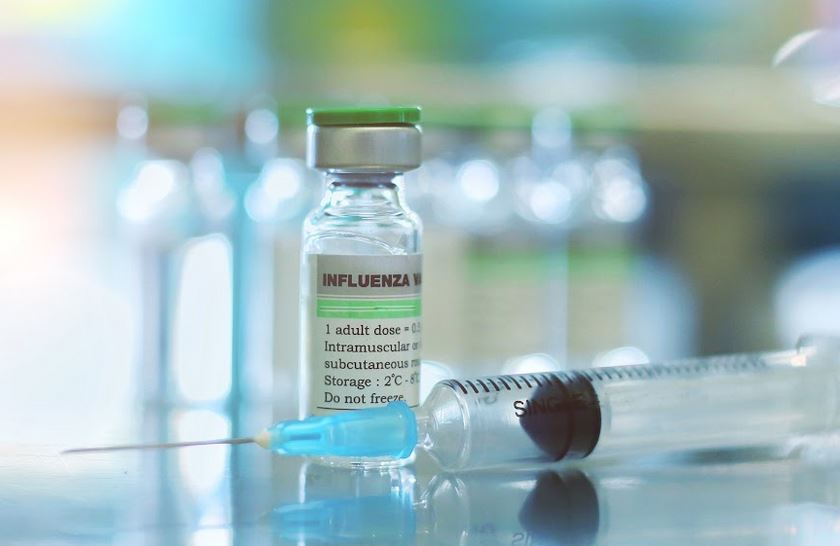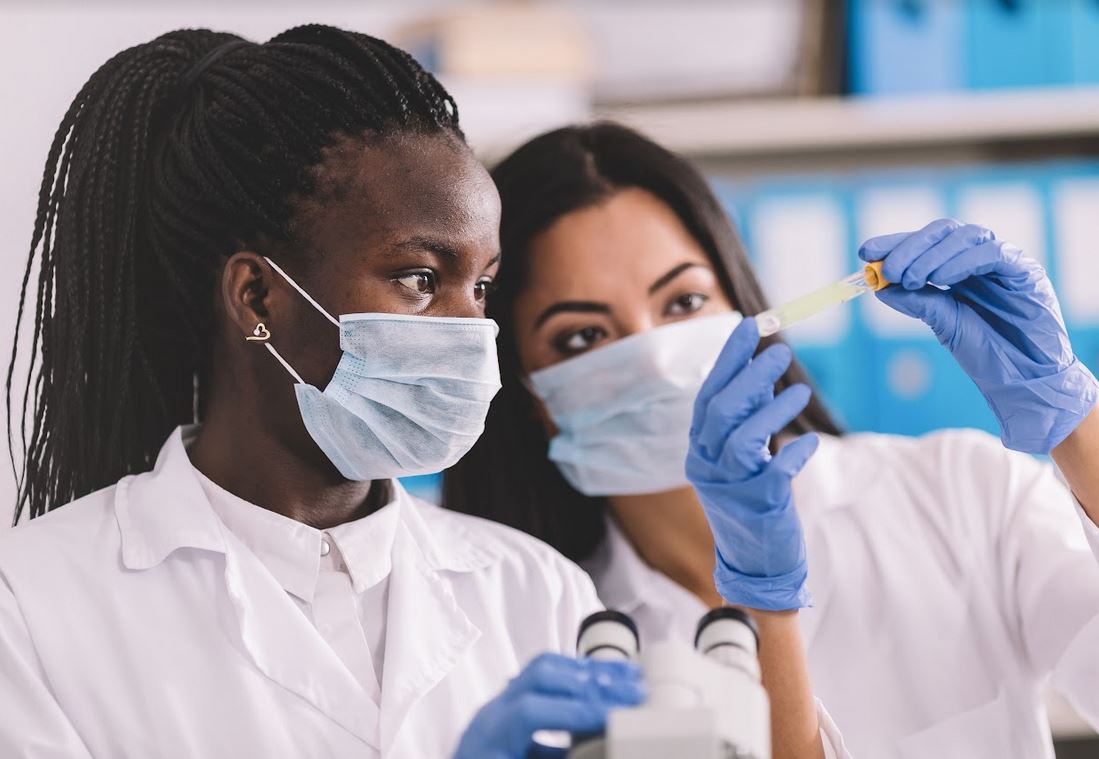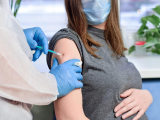After 2 years of meetings, research, and collaboration, the Influenza Vaccine Research & Development Roadmap (IVR) was published today. The project, which was created through a partnership between the World Health Organization (WHO) and the University of Minnesota's Center for Infectious Disease Research and Policy (CIDRAP), outlines a decade's worth of milestones leading up to two goals: a universal flu vaccine and improved seasonal flu vaccines.
"We decided to focus on both of those things, because improved seasonal flu vaccines are essential to enhancing vaccine uptake in low- and middle-income countries, and universal flu vaccines would greatly enhance pandemic preparedness worldwide," says Kristine Moore, MD, MPH, medical director of CIDRAP, which publishes CIDRAP News. A universal vaccine would target multiple influenza strains, even potentially pandemic ones, and would not need tweaking every year like current seasonal flu vaccines do.
Besides the deaths and illness that better flu vaccines could prevent, Moore says, the more impetus countries have to expand their immunization programs, the more inroads will be available for public health officials to connect with people during emergencies such as pandemics.
 The goals may seem lofty in the context of 2021: It's year two of the COVID-19 pandemic, and despite years of flu inoculations, the current flu vaccines are subpar, offer fleeting protection, and use outdated technology. However, the IVR creators are hopeful despite being well aware of influenza's challenges—the steering committee consists of experts from the WHO, CIDRAP, the Bill & Melinda Gates Foundation, the Sabin Vaccine Institute, and the Global Funders Consortium for Universal Influenza Vaccine Development with the Task Force for Global Health.
The goals may seem lofty in the context of 2021: It's year two of the COVID-19 pandemic, and despite years of flu inoculations, the current flu vaccines are subpar, offer fleeting protection, and use outdated technology. However, the IVR creators are hopeful despite being well aware of influenza's challenges—the steering committee consists of experts from the WHO, CIDRAP, the Bill & Melinda Gates Foundation, the Sabin Vaccine Institute, and the Global Funders Consortium for Universal Influenza Vaccine Development with the Task Force for Global Health.
Working in favor of the IVR's goals, the pandemic has brought awareness, urgency, and solidarity to international public health, which in turn has accelerated technology, such as mRNA-based vaccines. Even more important, the very existence of the roadmap allows organizations to prioritize and coordinate their efforts across vaccinology, virology, immunology, animal and human models, and policy, financing, and regulation. The key? Stakeholder buy-in.
Input from a range of sectors
The first drafts of the IVR were developed with extensive input from a small task force of 16 international experts in influenza R&D. The IVR was then vetted through a series of four webinars that included more than 100 invited stakeholders across 29 countries.
After the next draft was finalized, the IVR project opened to the public for additional stakeholders to add their input. By the end of the comment period, people from 26 countries and 88 organizations had looked through the roadmap and shared their thoughts.
"This roadmap reflects the collective and prioritized input of the whole range of sectors," says Bruce Gellin, MD, MPH, IVR steering group member, Rockefeller Foundation's chief of global public health strategy, and formally of the Sabin Vaccine Institute. "That's been a real advantage of it, that it's had these very extensive listening sessions. … I'm impressed people can participate in these calls that are several hours and are able to hang on and continue to contribute throughout them."
Now, the IVR will rely on both previous and new stakeholders to evolve. CIDRAP has created an IVR website to monitor progress, evaluate potential roadmap adjustments, and inform the influenza research community about new, related research developments. And one of the IVR's original stakeholders, the Global Funders Consortium for Universal Influenza Vaccine Development, has already started thinking about its role moving forward.
"All of those hopeful outcomes—that faster, better, more efficient work—relies on the fact that there's somebody that monitors it or oversees it and coordinates it, and I think it's CIDRAP that will play a huge role going forward," says Joe Bresee, MD, of the Task Force for Global Health, and IVR steering group member.
"Going forward, CIDRAP will monitor the progress in meeting the activities and milestones of the roadmap, and where we see gaps, where we see slow progress or that parts of it are forgotten or not attended to, the Global Funders Consortium can provide resources or provide attention to those areas," he says, likening it to matchmaking priority milestones and eligible funders.
Punnee Pitisuttithum, MD, IVR task force member, of Thailand's Mahidol University, says the many milestones in the roadmap is one of its assets. "Each organization has its own objectives and own mission, and we need to talk to them and sell the roadmap in the way that fits that mission," she says. "We cannot sell everything in one, right? So we think that, based on their interests, we can tailor and then finally complete whatever is written in the roadmap."
A constant, urgent need
The reasons behind IVR's urgency haven't significantly changed since the first meeting, despite the COVID-19 pandemic. Influenza kills 290,000 to 650,000 people per year, disproportionately affecting those in lower- and middle-income countries. The world has historically experienced an influenza pandemic once every 25 years, and some models project that, if a severe pandemic occurs, 33 million people could die within the first 6 months.
The bottom line, experts say, is that we need better flu vaccines.
"Any time you say you have to take a vaccine every year for all adults in India, you're talking about a billion people needing the vaccine every year. That's really not going to work for us," says Gagandeep "Cherry" Kang, MBBS, MD, PhD, IVR task force member, of Christian Medical College in India. "We can start the process [for seasonal immunizations] now by having vaccines for targeted groups like pregnant women, but ultimately, we will need a better vaccine."
While the IVR mainly focuses on vaccine research and development, its creators are already looking beyond those steps. Whether scientists are able to create a universal flu vaccine, better seasonal flu vaccines or both, they will still have to be delivered.
"While immunization programs everywhere have extensive experience with childhood immunizations, planning and running COVID-19 vaccination campaigns is currently focused primarily on a very different population: adults. Countries with influenza vaccination experience will have a leg up in running a COVID-19 vaccination program," Gellin says.
 "While vaccination [distribution] is not the focus of the IVR roadmap, we need to keep the end user in mind as vaccines are designed. It's an end-to-end approach."
"While vaccination [distribution] is not the focus of the IVR roadmap, we need to keep the end user in mind as vaccines are designed. It's an end-to-end approach."
In a way, Kang's reflections on the roadmap speak to this issue as well. "Everything is possible if you've got the resources," she says, adding that the IVR may be able to help detangle funding from local research politics.
"There is a very willing community out there," Kang says. "The process of developing the roadmap brought a lot of the community together. Now to hold them together, you actually need projects for them to work on. If you work on them individually—there's a lot of brilliant scientists—there's always this problem of, are you duplicating? Are you truly complimenting? How much can you share?
"We move faster together."
See also:
Jan 19 CIDRAP News story "Flu vaccine roadmap aims to promote game-changers, equity"
Sep 30 Vaccine review article on the roadmap
Sep 30 University of Minnesota news release on the IVR


















